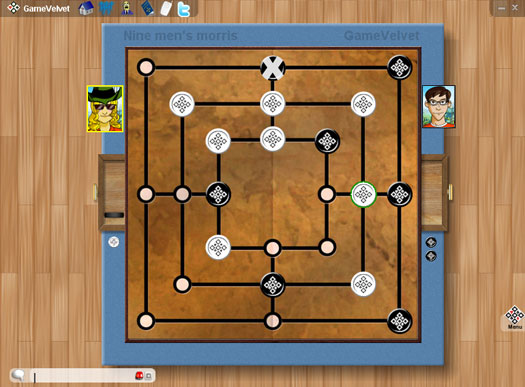
Men’s Morris layout on one side was found as part of the Gokstad Viking ship The game became popular throughout Europe: a double-sided game board with a Nine This is also discussed at length in Schädler (2021). Qurna, g but these are not able to be datedĭefinitively-the monument only provides an earliest possibleĭate. Ramesseum f and the Mortuary Temple of Seti I at Upon the existence of boards carved on ancient monuments such as the e Earlier dates have often been proposed based That was abandoned in the late 4th century contained no millsīoards. Gaming boards found in a Roman fort at Abu Sha’ar 227) describes a boardįound in a Byzantine villa in חורבת עקב ( Ḥorvat ʿAqav), dated 400–600 CE, while a cache of The moment we do not have solid evidence for an earlierĭate. The game dates from at least the late Roman Empire or Byzantine period, and at An image of the board carved on the decapitatedĬapital in situ can be seen in Vanderpool (1966, plate 32). #HistoryĪ Nine Men’s Morris board of unknown age in the Roman Agora, Athens.Ī board carved on the capital of the Athenian trophy (or tropaion, τρόπαιον) from Marathon, which was constructed some time after 490 BCEīut destroyed at a later date. However, this varies according to location and time. When played on a board with diagonals, mills are not usually permitted to be made on the diagonal lines. They are unable to make a valid move on their turn. This case the player may remove two of the opponent’s pieces from the board.Ī player loses the game when they are reduced to fewer than three pieces, or if If all their opponent’s pieces areĭuring the movement phase, it is possible to form two mills simultaneously. Their opponent’s that is not part of a mill. Throughout the game, each time a player forms a mill they remove any piece of Three pieces, their pieces can ‘fly’ and move to any empty point on the board. Single piece along a line to another vacant point. In this part of the game, players take turns moving a

Once all the pieces have been placed, the (placement) phase, the players take turns placing a single piece at a time onto The game (as most mill games) is split into two phases. Nine Men’s Morris is played on the large mill board. #PlayĪ large-format Nine Men’s Morris game being played at a festival in Hungary. Their purpose is at the moment not well understood. Positions on walls where they could not possibly have been used for games, and Inscribed mill boards from around the world. 330) collects nearly a thousand examples of

In addition to being a game, the board itself was used as some kind of talisman

Other variations of the game - such as Shax or Morabaraba - are also played in several African countries. Games, played all around the world, but particularly in central EuropeanĬountries. Nine Men’s Morris is an ancient mill game,ĭating at least from Roman times.


 0 kommentar(er)
0 kommentar(er)
